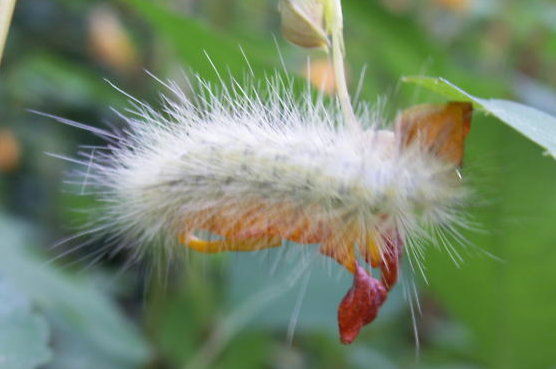Virginian Tiger Moth Caterpillars also known as the “yellow woolly bear” have a black body covered in dense, soft white or sometimes in yellowish hairs.
These are not venomous, stinging hairs, but they may cause irritation for some people. As they mature, the hairs become denser and bristlier, covering the body in clustered tufts that have longer hairs in the center of them.
In the late instar stages, Virginian Tiger Moth Caterpillars undergo significant growth and development. By the time they reach their final instar, they can measure anywhere from 2 to 5 centimeters (approximately 0.8 to 2 inches) in length.
These caterpillars are defoliators, skeletonizing the leaves they feed on, but only the late summer batch of caterpillars is plentiful enough to do much damage to crops. This species tends to have two to three life cycles per year, with one hibernating for the winter in temperate climates.
These caterpillars can be found in habitats such as gardens, meadows, and fields, where their food plants are abundant. In the garden you’ll find them on host plants such as dandelions, clover and other herbaceous plants.

Virginian Tiger Moth Caterpillar Facts and Identification
The caterpillars of Virginian tiger moth can be identified by spiky appearance consisting of tufts of creamy-white or tan-white hairs.
| Scientific | Spilosoma virginica |
| Family | Erebidae |
| Size | 2 to 5 centimeters |
| Diet | Leaves, dandelions, clover and other herbaceous plants. |
| Predators | sparrows, finches, chickadees, and warblers, orb-weavers and crab spiders |
| Occurrence | Early spring to fall |
| Distribution | North America |